30 Ways Dogs Show Their Emotions Without Saying a Word
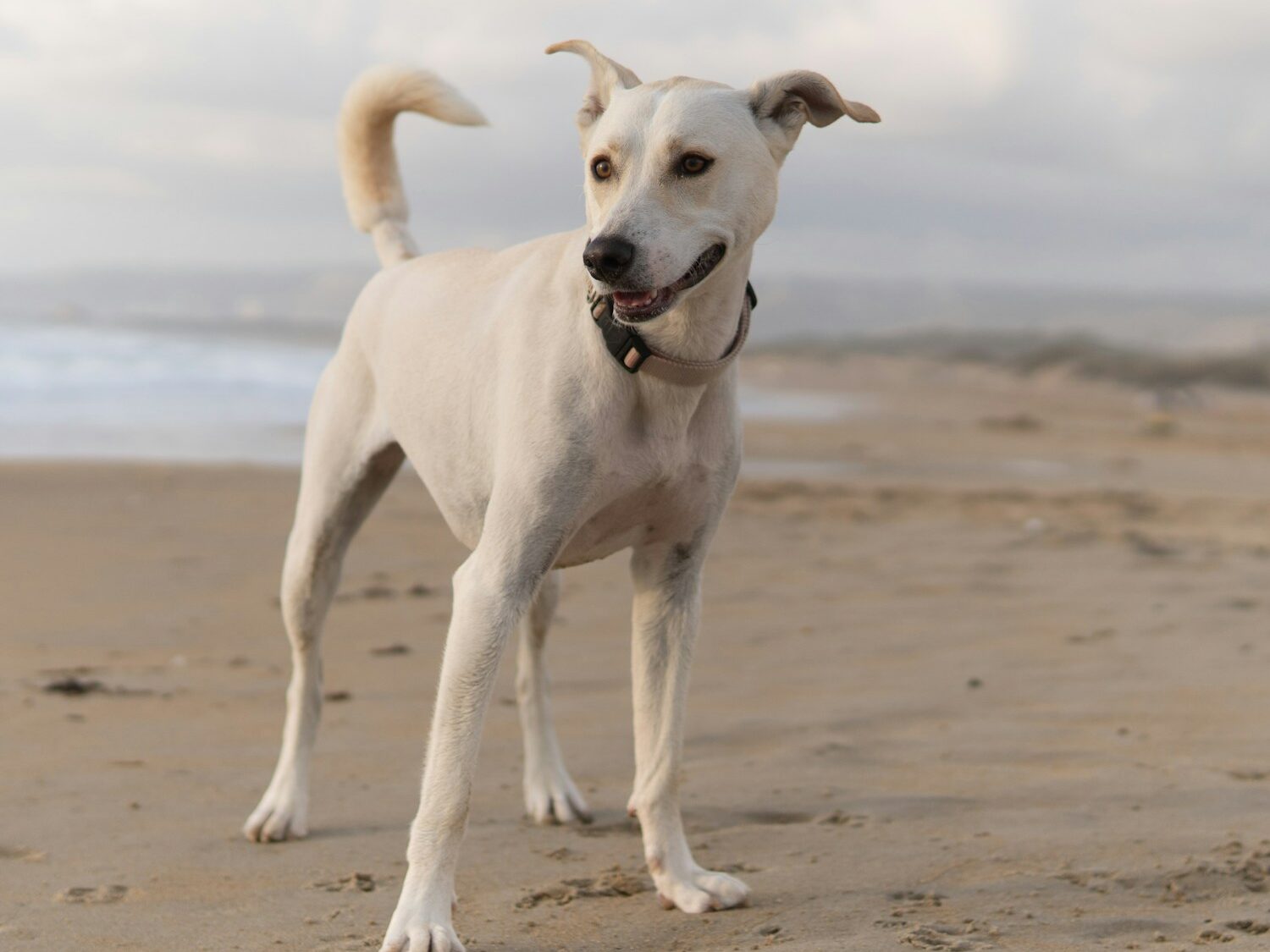
Dogs may not speak human languages, but that doesn’t mean they don’t express themselves clearly. Their emotions come through in their body language, facial expressions, and small habits that many owners don’t even notice. By paying attention to these subtle cues, you can understand exactly how your dog is feeling. Here are 30 ways dogs show their emotions without saying a single word.
Wagging their tail in different ways
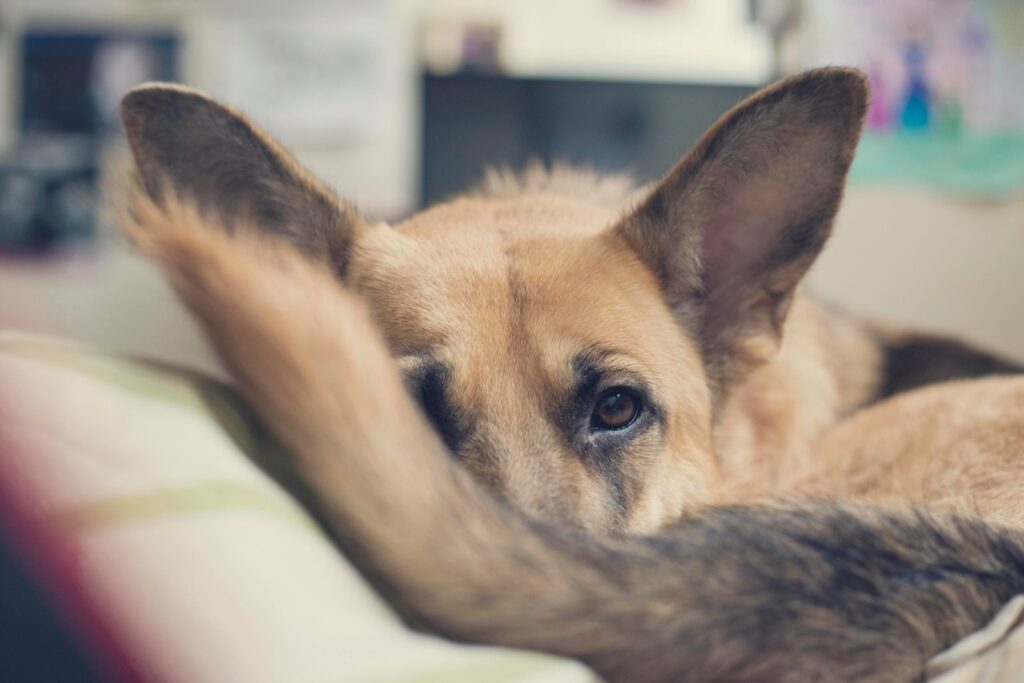
A wagging tail doesn’t always mean a dog is happy. A loose, full-body wag usually signals excitement and friendliness, but a slow or stiff wag can mean nervousness or hesitation. A tucked tail means they’re feeling afraid or insecure, while a high, fast wag can indicate alertness or even agitation. Every tail movement tells a different story.
Jumping up on you
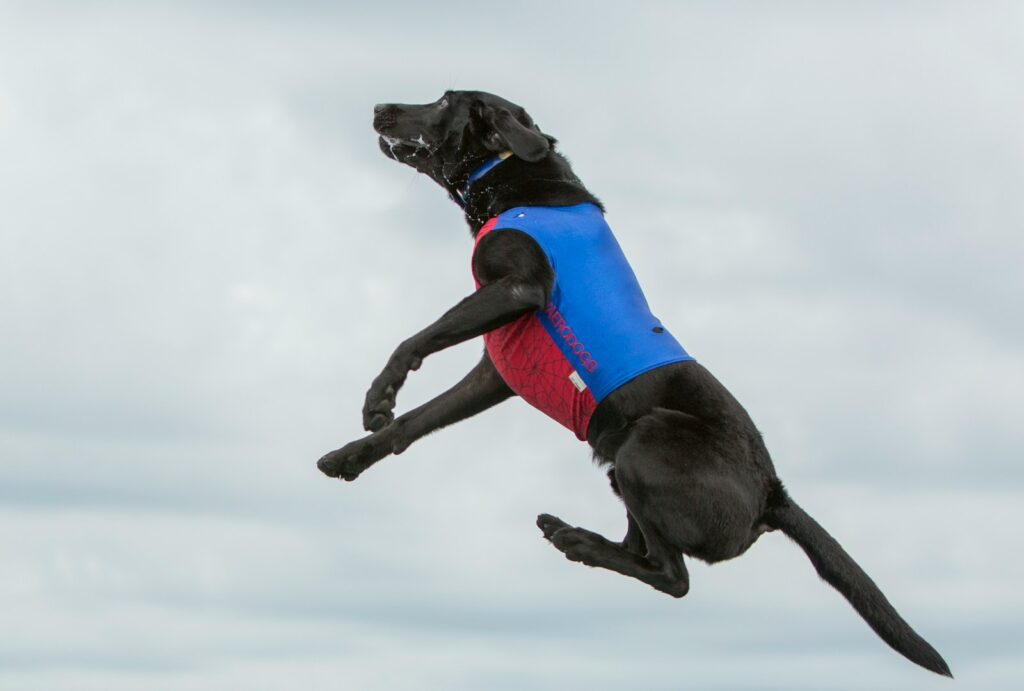
Dogs often jump up when they’re feeling excited, especially when greeting someone they love. While this can sometimes be discouraged, it’s usually their way of expressing happiness and enthusiasm. Some dogs may also jump when they’re trying to get attention or when they’re feeling playful. Understanding their body language helps determine the reason behind their excitement.
Licking your face or hands
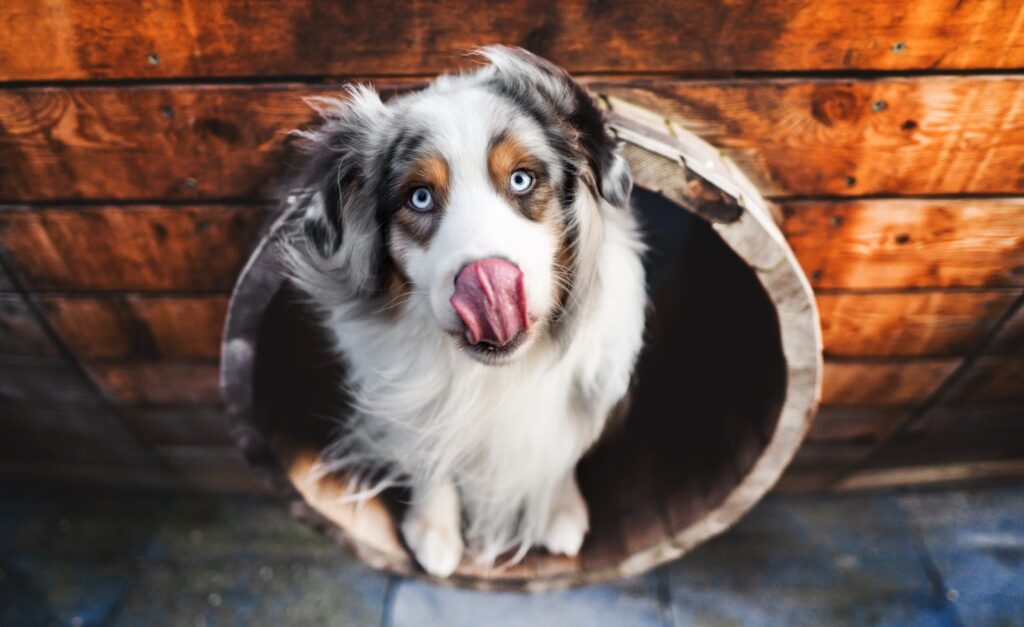
When a dog licks your face or hands, it’s often a sign of affection and bonding. This behavior is instinctive, as puppies lick their mothers for comfort and attention. Sometimes, licking can also be a way of showing submission or even stress. If a dog is licking excessively, it might mean they are feeling anxious or overwhelmed.
Tilting their head when you talk
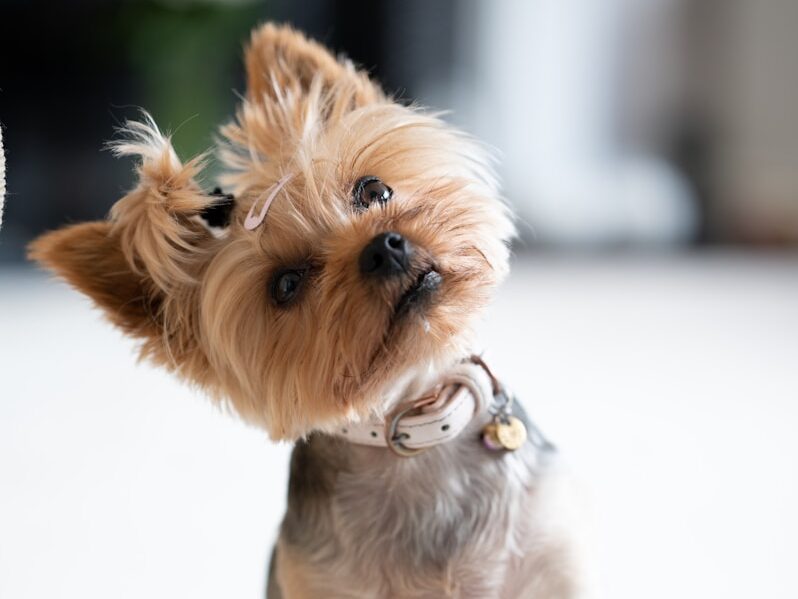
A head tilt is one of the cutest ways dogs show curiosity or confusion. When they hear an interesting sound, they may tilt their head to try and understand it better. Some dogs also do this to show engagement, signaling that they are paying attention and trying to process what’s being said to them.
Bringing you their favorite toy
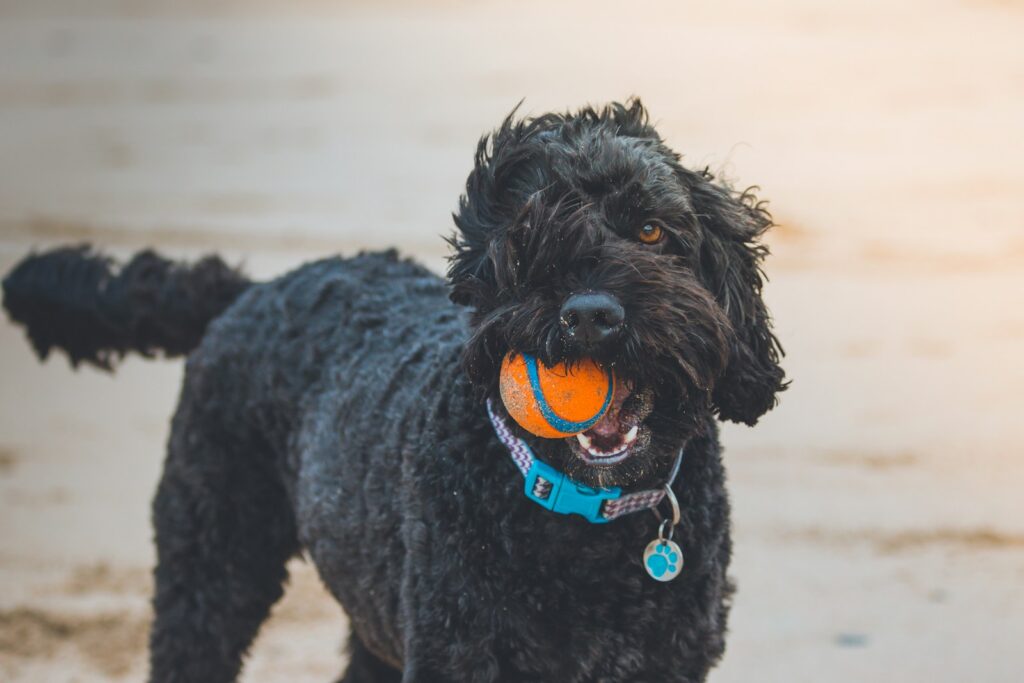
When a dog brings you a toy, it’s not just an invitation to play. This behavior can mean they trust you, want to share something valuable with you, or are trying to seek comfort. Some dogs will bring their owners toys when they’re feeling anxious, as it provides them with a sense of security and familiarity.
Leaning against you
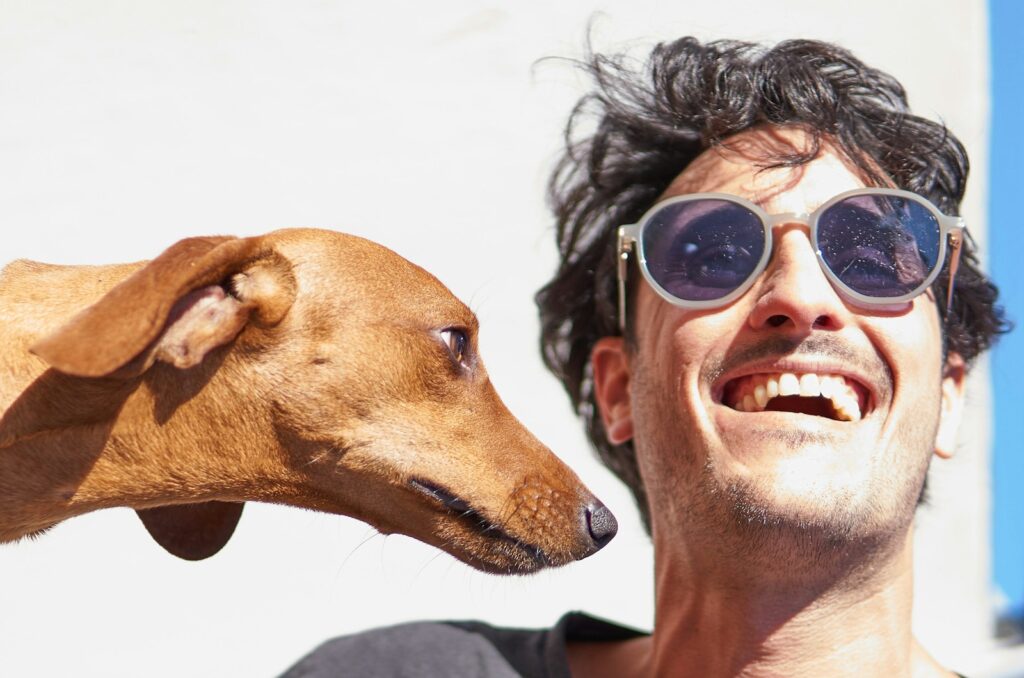
A dog that leans against you is looking for reassurance, comfort, or a sense of security. This behavior is common in affectionate dogs who want to be close to their owners. Leaning can also be a way of seeking attention or even protection if they are feeling nervous in a new environment.
Rolling over and showing their belly

When a dog rolls onto their back and exposes their belly, they are demonstrating trust and submission. If they are waggingtheir tail and seem relaxed, they might also be asking for belly rubs. However, if they seem stiff or avoid eye contact, it may be a sign of nervousness rather than an invitation for affection.
Yawning when they’re not tired
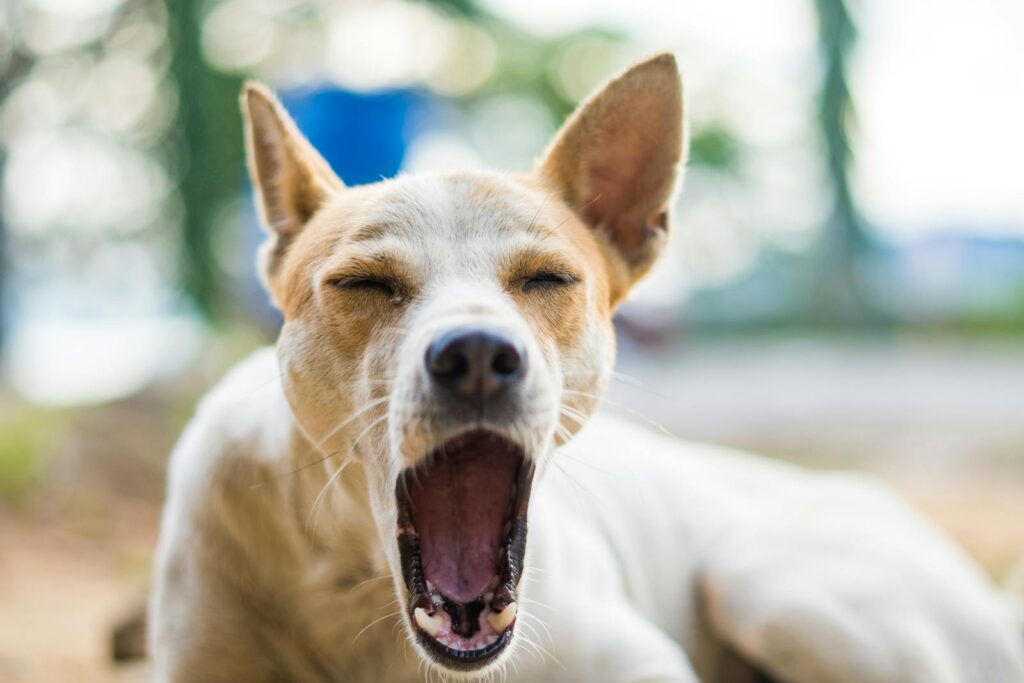
Dogs don’t only yawn when they’re sleepy. A yawn can also indicate stress, nervousness, or discomfort. If your dog yawns in a tense situation, it may be their way of calming themselves down. Yawning can also be contagious between dogs and their owners, showing just how closely bonded they are.
Pawing at you
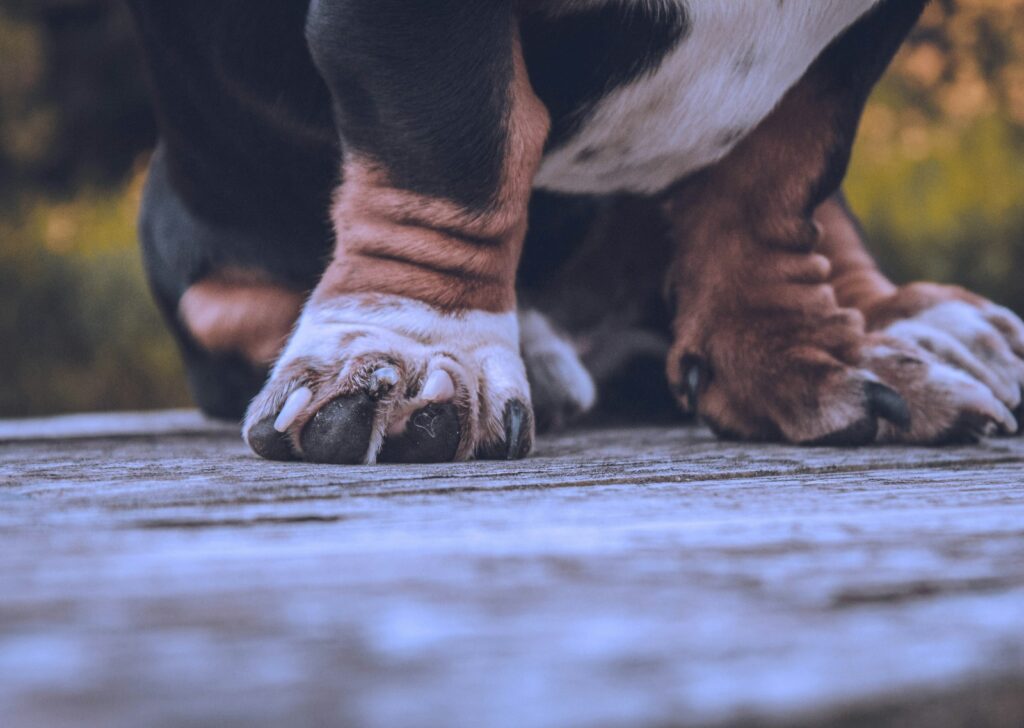
If a dog places their paw on you, it’s often a sign that they want attention or affection. Sometimes, this behavior can be a way of seeking reassurance, especially if they feel uncertain or anxious. Some dogs will paw at their owners when they’re excited, while others may do it to remind you that it’s time for food or play.
Barking in different tones
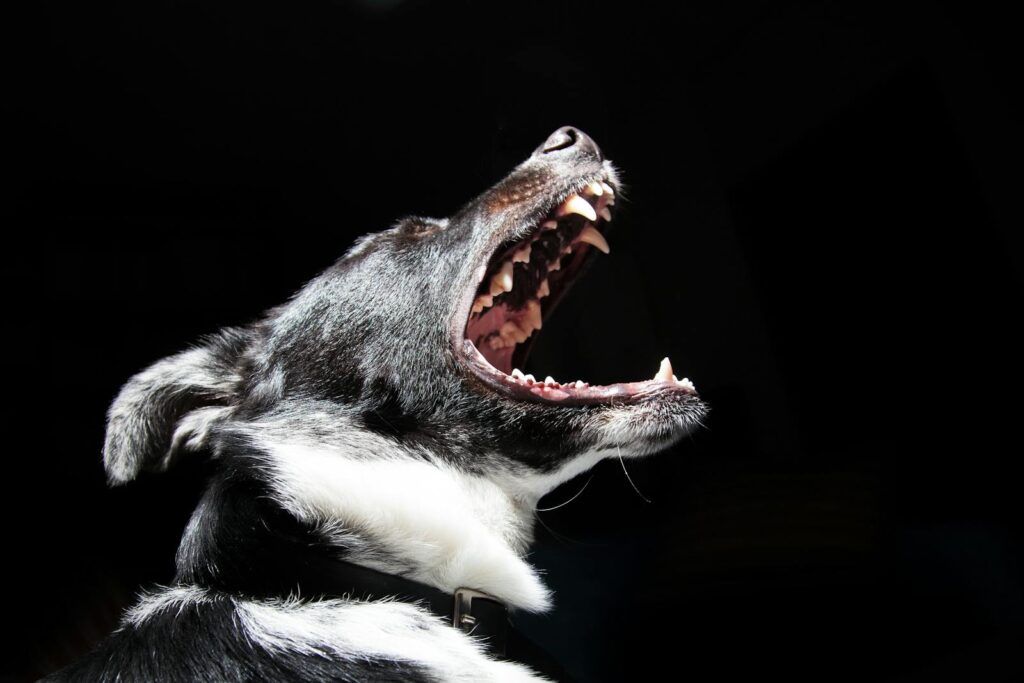
Barking is one of the most obvious ways dogs communicate, but the meaning behind it depends on the tone and frequency. A sharp, rapid bark often signals excitement or alertness, while a deep, continuous bark can be a warning. Whining or soft barking may indicate anxiety or a desire for attention. Paying attention to these variations helps interpret what they’re feeling.
Following you from room to room
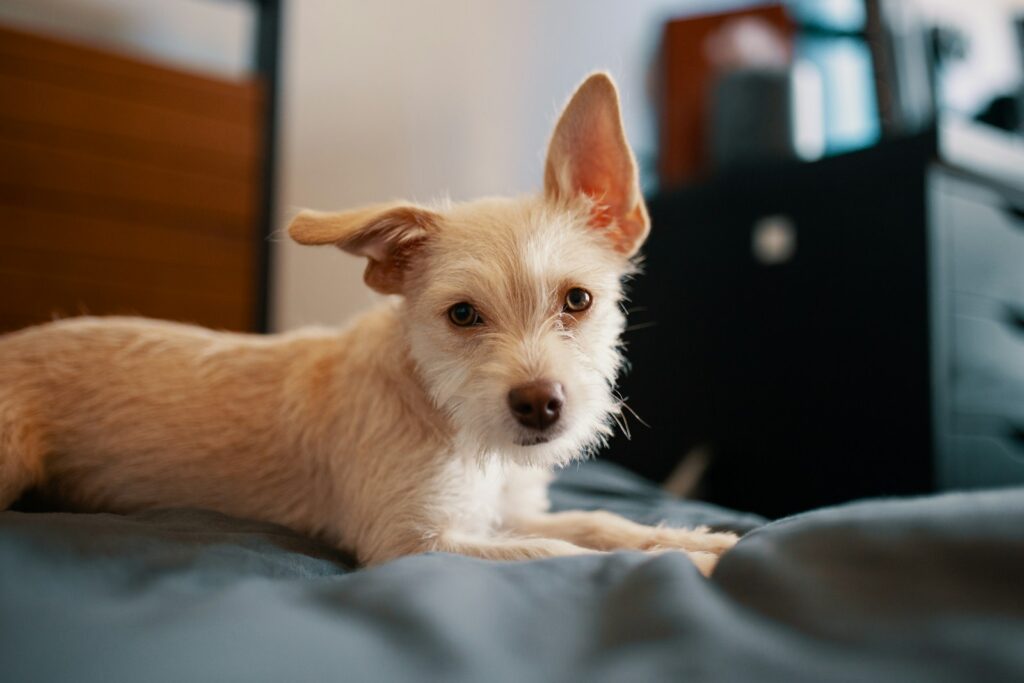
Dogs that follow their owners everywhere are often expressing their deep attachment and loyalty. This behavior can mean they feel safest when they are near you, or they may simply enjoy your company. Sometimes, excessive following can indicate separation anxiety, especially if a dog becomes distressed when left alone.
Holding eye contact
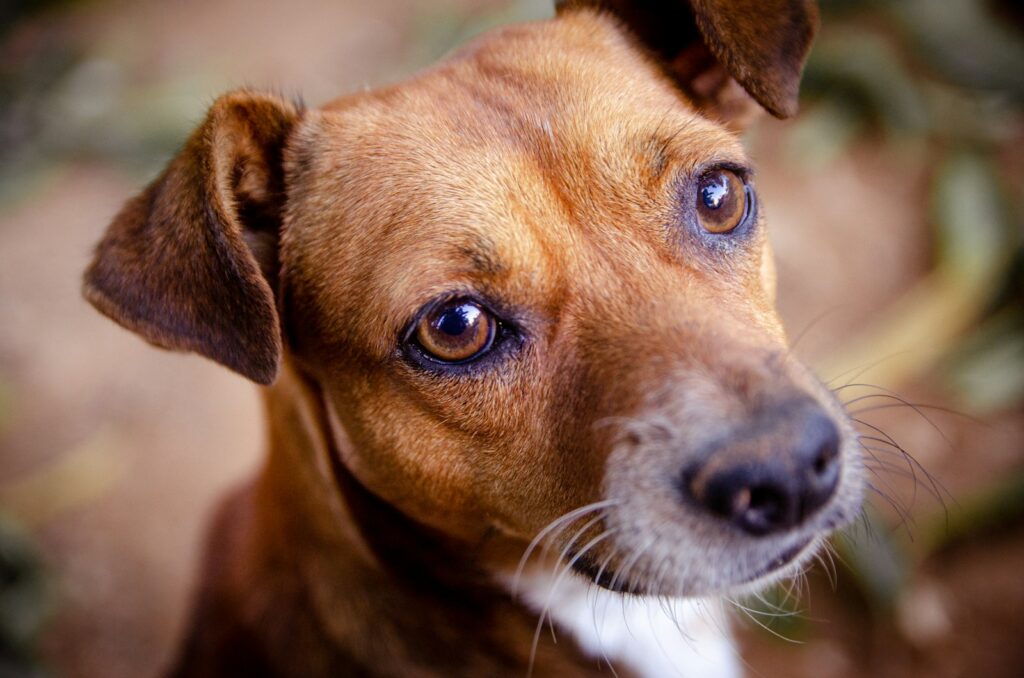
Eye contact in dogs can have different meanings depending on the situation. A relaxed gaze often signals affection and trust, while intense staring can be a sign of dominance or a challenge. Some dogs avoid eye contact when they are feeling nervous or guilty, as they instinctively try to show submission.
Flicking their ears back

A dog’s ears are highly expressive and can provide insight into their emotions. If their ears are pinned back slightly while they’re wagging their tail, it often means they’re happy. However, ears that are stiffly pinned back can indicate fear, stress, or even aggression. Paying attention to their ears along with their overall body language provides a clearer picture.
Sighing deeply
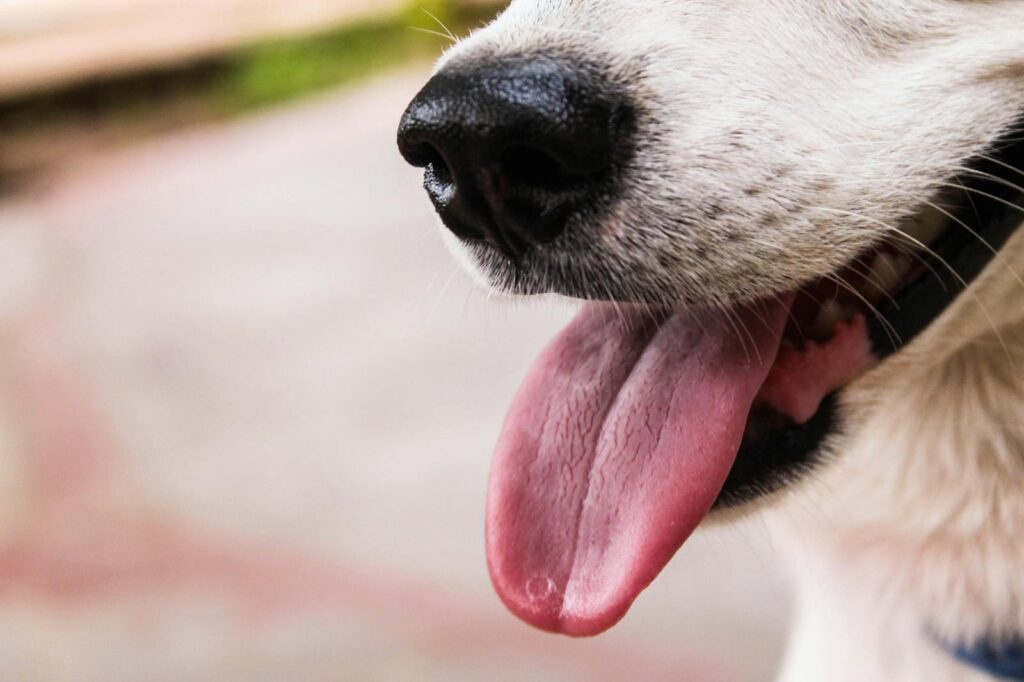
A deep sigh from a dog usually means they are feeling relaxed and content. You may notice this after they settle into a comfortable spot or after receiving affection. However, repeated sighing combined with slow movements or withdrawn behavior can indicate sadness or frustration, signaling that they may need more attention.
Snuggling up next to you

When a dog chooses to sleep next to you or curl up in your lap, it’s a clear sign of love and trust. Dogs are naturally protective and won’t relax in a vulnerable position unless they feel completely safe. This type of closeness is one of the strongest signs of emotional bonding between a dog and their owner.
Zooming around the house
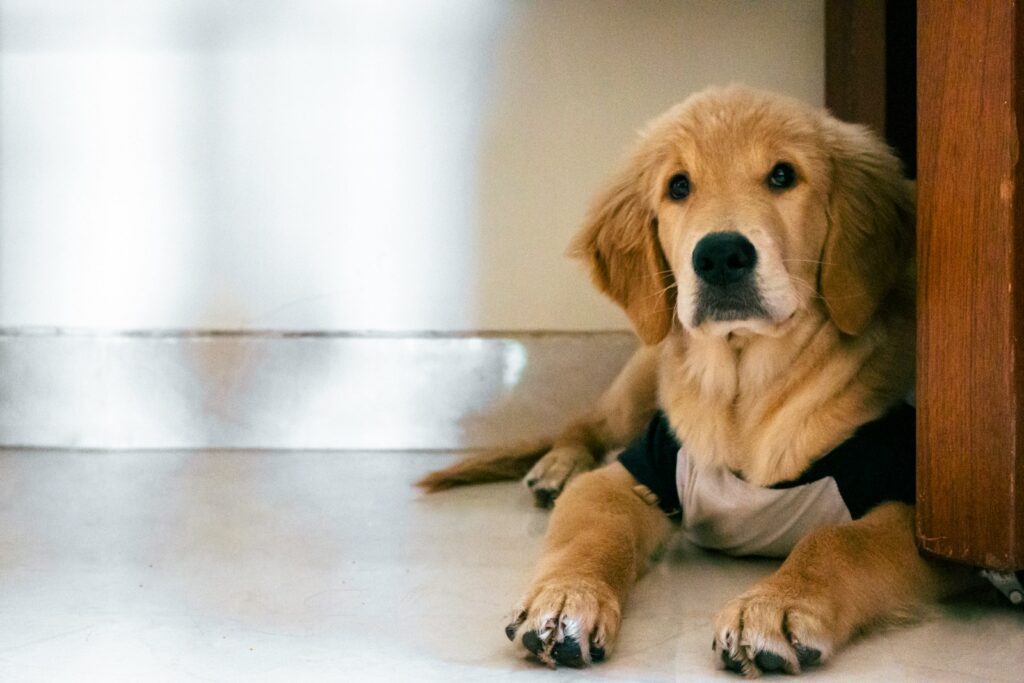
Sudden bursts of energy, also known as “zoomies,” often indicate excitement or happiness. Dogs may run around wildly after a bath, after waking up, or when they see their favorite person. This behavior is a healthy way for them to release excess energy, and it’s a clear sign that they’re feeling playful and joyful.
Whining when left alone
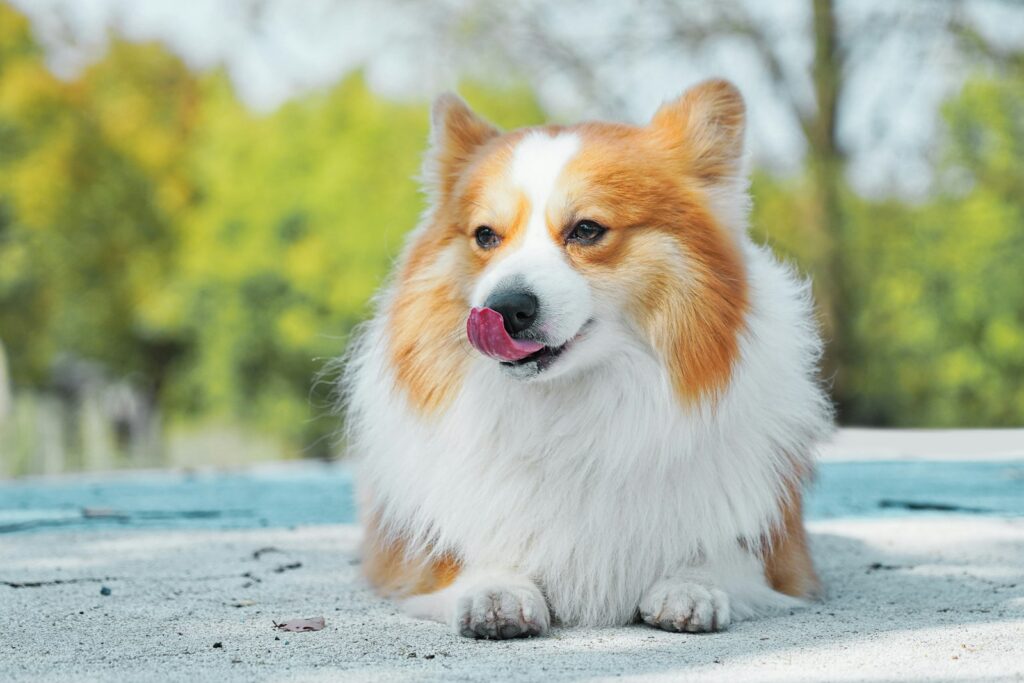
Dogs that whine when their owner leaves are showing signs of attachment and possible separation anxiety. Whining can also be a way of seeking attention or expressing discomfort. If a dog constantly whines when alone, they may need additional training or a comforting routine to help ease their anxiety.
Lifting one paw while standing

If a dog lifts one of their front paws while standing still, they are usually feeling curious or unsure. This behavior is common in hunting breeds, but it can also mean a dog is trying to focus on something interesting or is waiting for a cue from their owner.
Nudging you with their nose
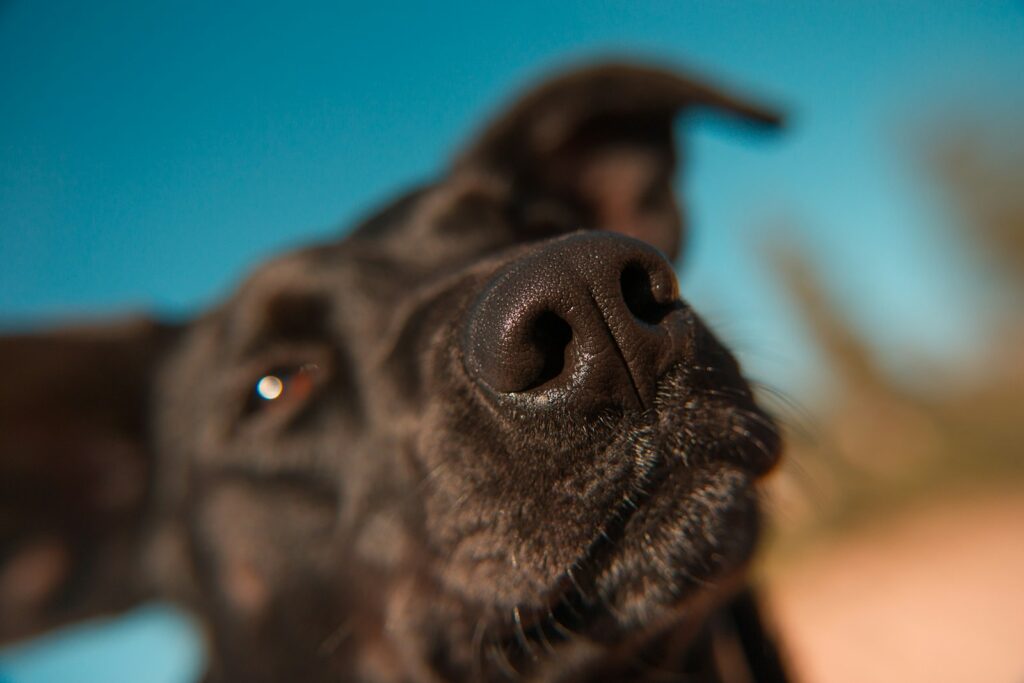
A gentle nose nudge is often a request for attention, affection, or food. Some dogs will nudge their owner’s hand when they want to be petted, while others may do it as a way of greeting. Persistent nose nudging can also be a sign of reassurance-seeking behavior.
Bringing you random items

Some dogs bring their owners toys, socks, or even household objects as a way of expressing affection. They may see it as sharing something valuable or simply as an invitation to play. If a dog regularly brings you items, it’s a clear sign that they enjoy your company and want to interact with you.
Pacing back and forth

When a dog paces back and forth, it’s often a sign of restlessness or anxiety. This behavior can indicate excitement, like when they’re waiting for a walk, but it can also signal stress if they seem unable to settle. Dogs that pace excessively may need more mental stimulation, exercise, or reassurance from their owners to feel at ease.
Tucking their tail between their legs

A dog tucking its tail is a universal sign of fear, submission, or insecurity. It usually happens when they feel threatened, nervous, or overwhelmed. If their tail is tucked tightly and they’re avoiding eye contact, they may be feeling unsafe or anxious. Understanding this signal helps owners comfort their dogs and address whatever is making them uneasy.
Lifting their lips to show teeth
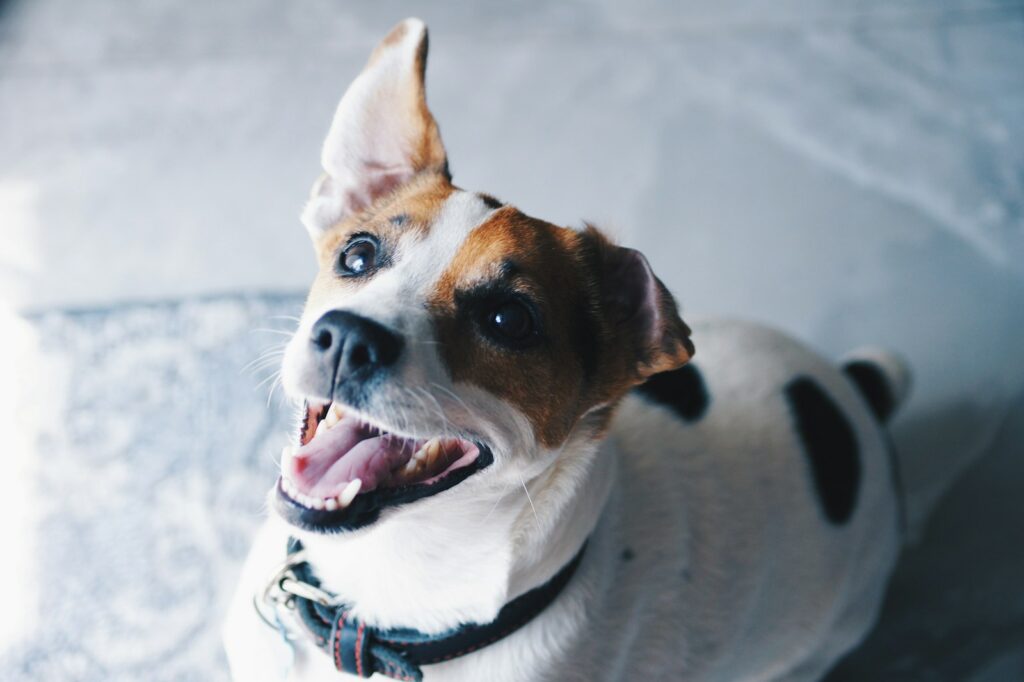
A dog showing their teeth can mean different things depending on the situation. A playful grin, often called a “submissive smile,” usually comes with a wagging tail and relaxed body language, showing excitement. However, if their teeth are bared with stiff posture and a growl, it’s a clear warning sign that they feel threatened and need space.
Standing on their hind legs

Some dogs stand on their hind legs as an affectionate greeting, much like a human hug. If they place their paws on you and wag their tail, they’re likely excited and happy to see you. However, if a dog is doing this toward another dog with a stiff body, it can be a sign of dominance or an attempt to establish control.
Freezing in place

If a dog suddenly freezes and stops moving, they are likely assessing a situation before deciding how to react. This behavior is often seen when they feel uncertain, nervous, or even excited but unsure how to proceed. Freezing can also be a warning sign in aggressive situations, meaning the dog is about to act defensively.
Shaking off, even when not wet
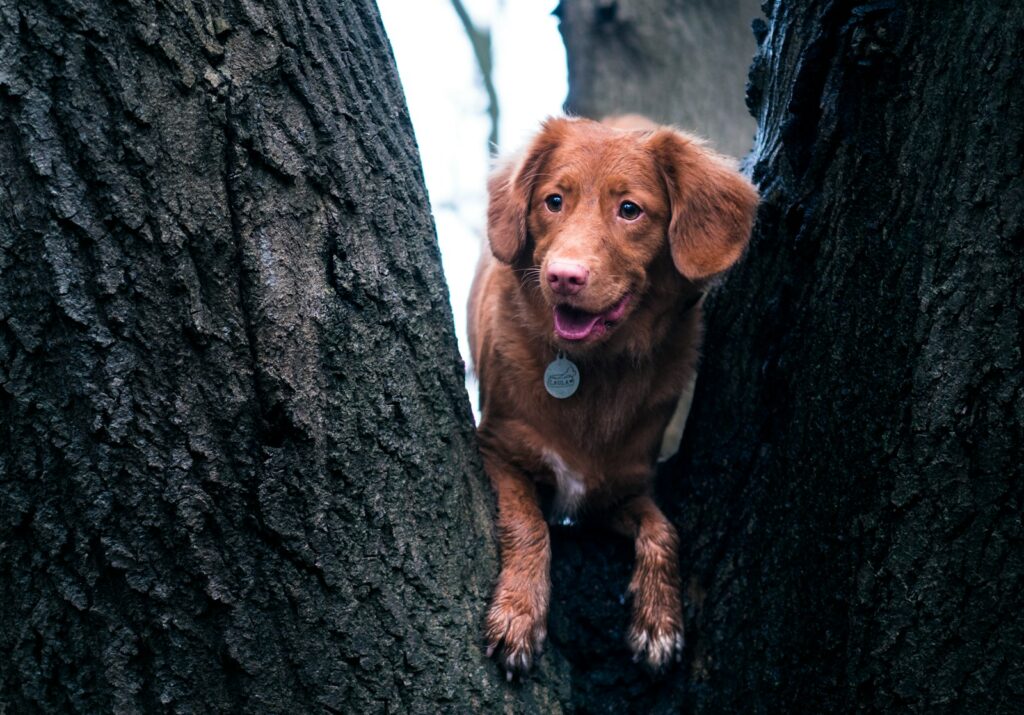
Dogs shake off more than just water. If your dog suddenly shakes their entire body after a stressful or exciting moment, they may be trying to release tension. This behavior is common after interactions with other dogs, vet visits, or being in an unfamiliar environment. It’s their way of resetting and calming themselves down.
Sleeping in a curled-up position

A dog curling up in a tight ball while sleeping is often trying to stay warm or protect their vital organs. This position isinstinctive, dating back to when dogs lived in the wild and needed to shield themselves from danger. While some dogs just like sleeping this way, it can also mean they feel slightly insecure or are trying to conserve body heat.
Lying down with legs stretched behind them

When a dog sprawls out with their back legs extended behind them, sometimes called “splooting,” it usually means they’re feeling comfortable and relaxed. Puppies and certain breeds, like Corgis, do this often. It can also help them cool down on a cold surface. If done frequently, it’s a sign they feel safe and at ease in their environment.
Panting when not hot
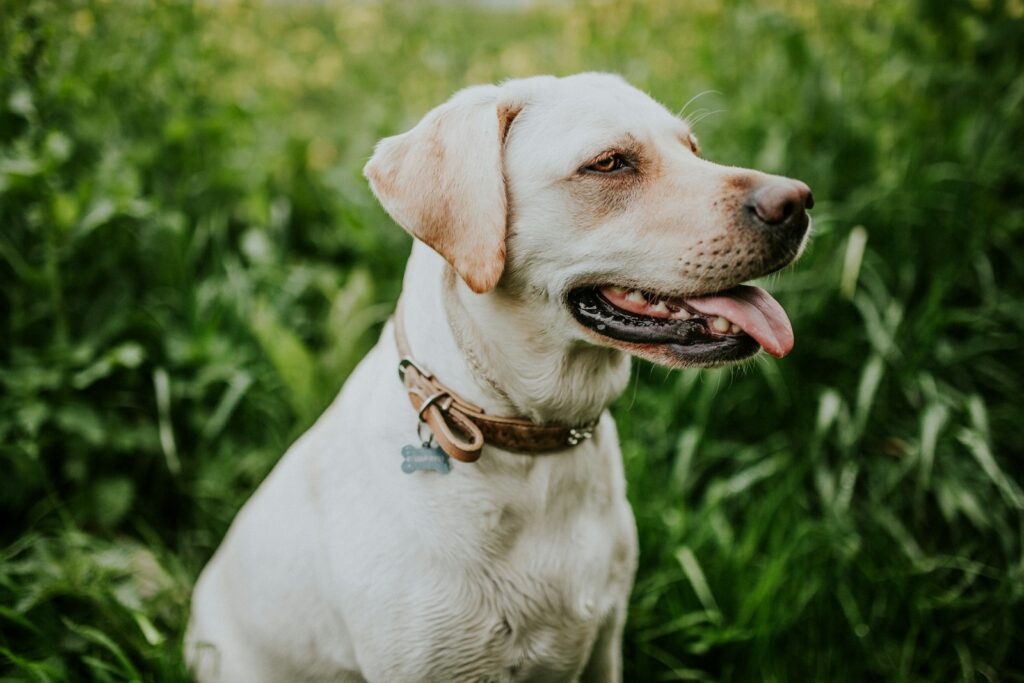
Panting is normal after exercise or on a hot day, but if a dog is panting excessively when they haven’t been active, it can be a sign of stress, excitement, or even pain. Dogs pant to regulate their temperature and calm themselves down, but if panting happens frequently without an obvious reason, it’s worth paying attention to their overall health.
Giving a long, slow blink
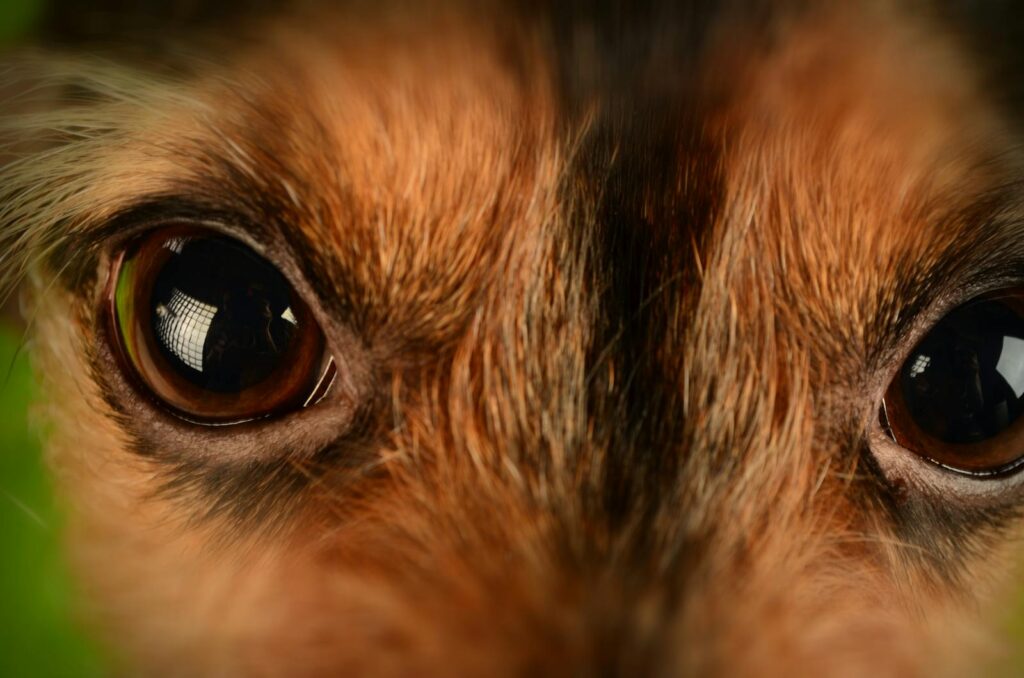
A slow blink from a dog is a sign of trust and relaxation, much like in cats. If your dog gives you a slow blink while lying down or resting, it means they feel safe and content in your presence. This gesture is a great way to bond with your dog—if you return the slow blink, they may even do it back.





